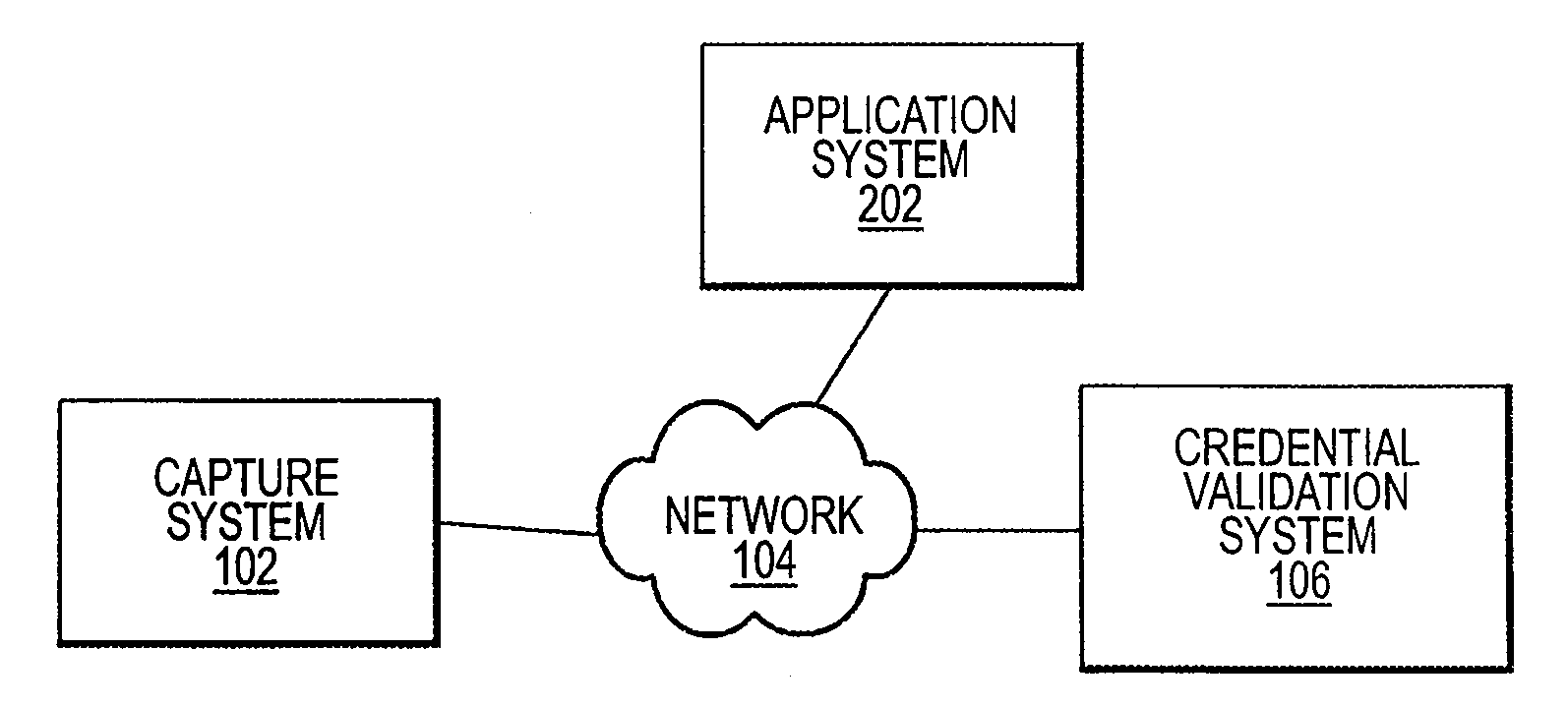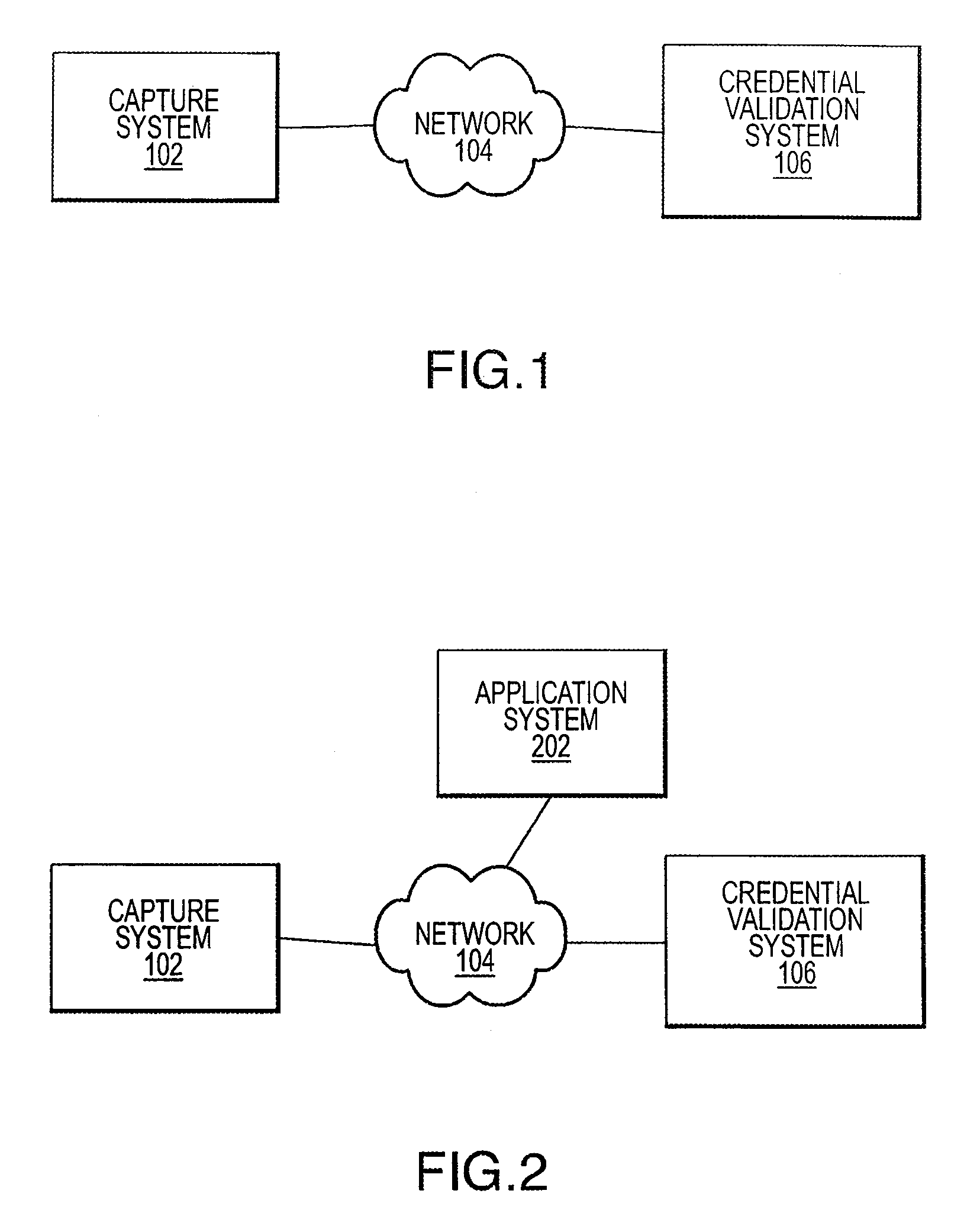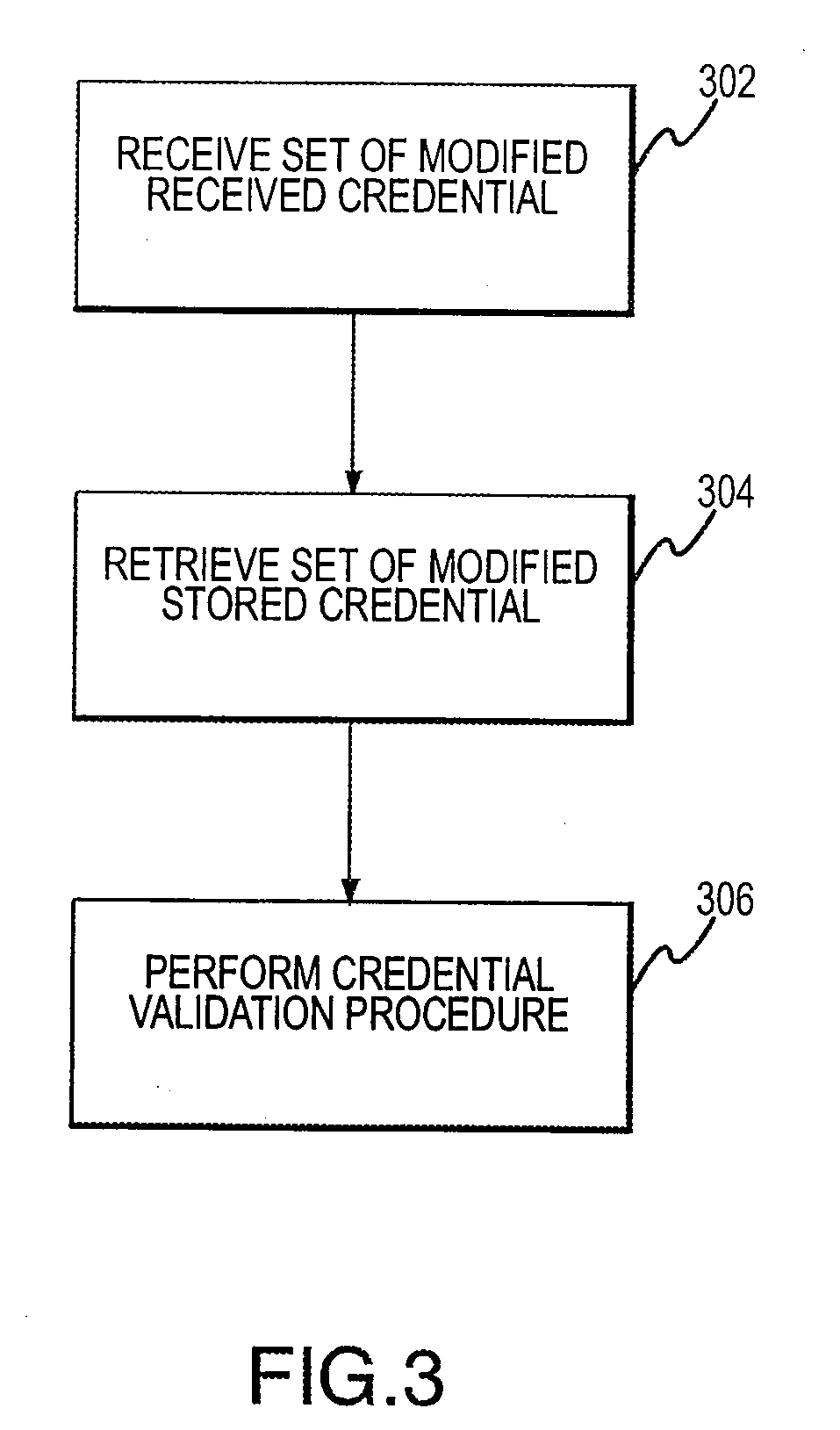Methods and apparatus for credential validation
a credential validation and credential technology, applied in the field of credential validation, can solve the problems of social security number theft (especially in combination with other information, such as address history), public server ids and passwords that are stored in plaintext database on publicly available and possibly hackable public servers, and are typically not considered trustworthy
- Summary
- Abstract
- Description
- Claims
- Application Information
AI Technical Summary
Benefits of technology
Problems solved by technology
Method used
Image
Examples
exemplary embodiment 1
Weighted Quorum of Exact Matches
[0115]One embodiment of the present invention facilitates verification of credentials when the credentials comprise a set of data points, and where a match is computed algorithmically as a weighted sum of the number of exact matches of individual credentials within the set. The data points within the credential set can be assigned an ordering (ordered set or sequence) that is common to both the presented and stored formulations, i.e., the canonical ordering. The term credential sequence may also be used to include the canonical ordering of the credential set.
[0116]A method in accordance with an embodiment involves the pairwise comparison of each modified credential from the stored and presented credential set proceeding from the first to the last credential pair in the canonical ordering. The method includes a match threshold, which is a numerical value that describes the minimum number of pairwise matches under which the algorithm determines credenti...
exemplary embodiment 2
Discrete N-Ball Intersection
[0135]In differentiating the previous embodiment, discrete N-ball intersection supports inexact matching of individual elements of a credential set. For each individual element in the credential set, it effectively applies a weighted distance function for comparison to the threshold, although it is specially modified to support the fact that a distance measurement cannot be applied to conventionally modified data. It does so by meeting several specific processing criteria. Like the weighted quorum of exact matches, it provides a weighted cost function and threshold. However, rather than performing a simple equality test for each element of pairwise comparison, a special kind of set intersection is applied.
[0136]In the special type of set intersection, several sequences of modified credentials are generated in modifying both the presented and stored credentials. Rather than generating a single modified value for each individual credential data point, a num...
exemplary embodiment 3
Client Algorithm with Encryption
[0211]In an alternative embodiment, the system upholds the main objective of never allowing credentials to exist in machine readable form on the authentication server; however, the roles and relationship between presenting client and authentication server are significantly modified. In this embodiment, the authentication server acts as a secure repository of previously stored credentials and the presenting client actually performs the credential validation. This approach would use public key cryptography to protect the privacy and integrity of credentials on the authentication server. It would also use public key cryptography to establish a trust relationship between the authentication server and the presenting client.
[0212]A method in accordance with this embodiment proceeds as follows. During registration, the user or system identifies an authentication server to trust for storage of credentials. The user would have previously obtained an asymmetric...
PUM
 Login to View More
Login to View More Abstract
Description
Claims
Application Information
 Login to View More
Login to View More - R&D
- Intellectual Property
- Life Sciences
- Materials
- Tech Scout
- Unparalleled Data Quality
- Higher Quality Content
- 60% Fewer Hallucinations
Browse by: Latest US Patents, China's latest patents, Technical Efficacy Thesaurus, Application Domain, Technology Topic, Popular Technical Reports.
© 2025 PatSnap. All rights reserved.Legal|Privacy policy|Modern Slavery Act Transparency Statement|Sitemap|About US| Contact US: help@patsnap.com



